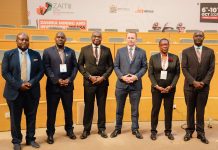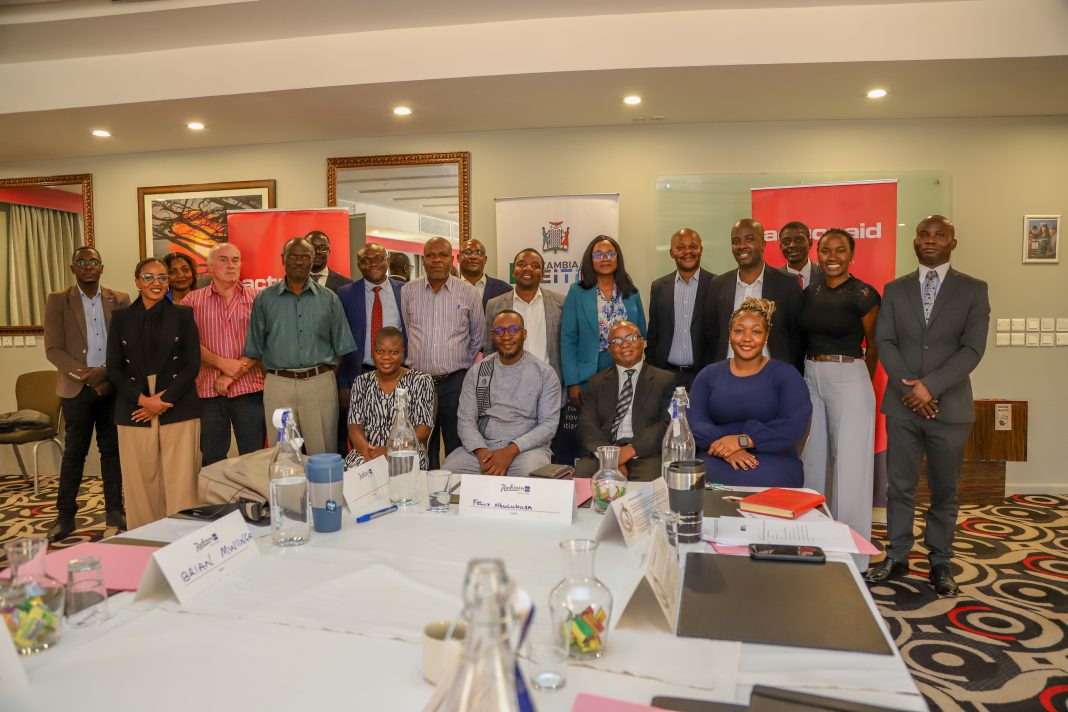How does one know exactly how much in taxes and mineral royalties mining companies pay for the minerals they mine? And how are Zambians to know whether Government received whatever amounts are due?
In this interview with the National Coordinator and Head of Secretariat at the Zambia Extractive Industries Transparency Initiative (ZEITI), Mr Ian Mwiinga tells us where Zambian citizens can obtain independently-audited data about activities across the mineral value chain, and get the full picture of who our mineral wealth is benefitting.
ZEITI is the local Zambian chapter of the Extractive Industries Transparency Initiative (EITI), a global standard that was set up specifically to increase transparency within the extractive industries.
Please would you give us an overview of the EITI and, specifically, how it fosters minerals transparency?
The EITI in Zambia shines a light across the mineral value chain in the mining sector, beginning with how you acquire mining rights, to exploration activities and mineral reserves and, finally, to mining minerals – and what happens to the proceeds.
In terms of minerals production, we look at the quantity of minerals that’s produced in Zambia, the value of those minerals, and the taxes paid on them. Minerals are either exported using international market reference prices, or they’re traded domestically; we report on both. We also highlight production from artisanal and small-scale miners.
On the environmental side, we profile the companies that make contributions to the Environment Protection Fund. At the same time, we look at the value of the fund and the governance of the fund itself.
We do all of this by publishing independently audited information about activities across the mineral value chain in reports, and on digital platforms like our website and online portal.
How is ZEITI structured?
In terms of governance, the board chair is the Secretary to the Treasury. The board is composed of representatives from three major stakeholder groups: industry (the mining sector), government, and civil society. We also have observers on the board, namely the British High Commission, Trafigura, Transparency International Zambia, and Oxfam. We have quarterly board meetings to discuss policy issues in the sector, but most importantly, to approve the data that’s published in the EITI report.
For the first time, we have a platform where different stakeholders who wouldn’t ordinarily sit around the same table are able to dialogue, and to agree on what should be done using our data. The value of civil society is also that companies and government are afforded an opportunity to receive societal feedback. For me, that’s a huge achievement.

Over the last decade, several organisations or academics have selected macro-economic data – some using trade flows between countries, others Zambia’s financial account – to ‘prove’ the existence of very significant financial outflows from Zambia, stating that “billions of dollars” in mineral proceeds are illicitly exiting the country every year.
To what extent can ZEITI’s research and data help determine the truth of these serious allegations? How might Zambians determine whether these massive outflows are actually occurring?
We often hear “billions” being quoted, but it’s very difficult to see this in the data. Utilising EITI data is a foolproof way to see actual templates that companies sign off, confirming how much they produced, and in fact paid – and to whom. In the same way, you can also see the reports that are signed off by the government. You can triangulate this information with sources like the Office of the Auditor report, which is a critical and credible document, as well as company financial reports that are produced for shareholders.
With the volume of mining-related data that’s now available from multiple independent sources, we should question the reliability of research that throws up starkly anomalous results – research that is inconsistent with other data points – just as we should question the motives of researchers where their research output is, in fact, headline grabbing. We ought to use the wealth of available data to have an evidence-based conversation about so-called illicit financial flows. The EITI data provides that opportunity on figures that are tested by companies, the government – and by external parties.
“With the volume of mining-related data that’s now available from multiple independent sources, we should question the reliability of research that throws up starkly anomalous results.”
Let’s say Company X is accused of moving a sum of money out of the country. Could somebody with a bit of time on their hands go on to the ZEITI portal, look at the reports and – without needing much more than a calculator – use the numbers to get an accurate picture of what’s going on?
Absolutely, everything is there. And we’ve even gone a notch further: we also have a dashboard that visualises this data in graphs and pie charts. One can do a spot check of what companies are contributing, and it’s not a static data set – we continuously upload new data. We also look back at previous data, so we have a stable time series of data sets which can be used for regression modelling or financial modelling.
But importantly, EITI’s data doesn’t end at tax payments. We also provide a context. Remember that the key driver to what’s paid is a country’s law. In some jurisdictions, this comes from individual contracts – which are often confidential, as with most commercial agreements. But in Zambia, because we have a statutory license regime, the requirements are applicable to all, and visible to the public. For instance, the law states how much mineral royalty should be paid.
On that, I should mention that Zambia has a sliding mineral royalty regime – so if you don’t read what is provided in the law, it would be very easy to do a very linear – [and therefore inaccurate] – calculation. I’ve had conversations with people who say things like ‘the price of copper is at Y and company X produced 50,000 tons of copper – therefore we can cross-multiply and find out how much was due to be paid.’ But because of the sliding mineral royalty regime, this kind of linear calculation would not produce an accurate figure.
One also ought to be aware of a particular asset’s cost profile – you know, the adjustments and deductions. There are a lot of things to bear in mind, and that’s why these shouldn’t be conversations that casually take place without any evidence; they must be well-informed.
In my view, when you have data from the ZEITI, it actually takes away the emotional aspects of the conversation.
“Conversations shouldn’t casually take place without any evidence. In my view, when you have data from the ZEITI, it actually takes away the emotional aspects of the conversation.”
The Canadian government introduced the Extractives Sector Transparency Measures Act (ESTMA) in 2014, making it a legal requirement for all Canadian-listed extractive companies to annually publish the tax contributions they make in each country where they operate. This Act directly affects two of Zambia’s largest mining companies, Barrick and First Quantum Minerals.
What additional effect has this Act had on minerals transparency, and how could Zambian researchers use this data, for example by cross referencing it with ZEITI’s?
In terms of output, the ESTMA disclosures are nearly like-for-like with the EITI disclosures, although produced at different times and by different organisations. This is very reassuring.
There is increasingly a convergence on most of the requirements and principles required by different international standards. When one is adhering to, for example, the EITI process, it eventually becomes easy to also comply with the other international standards. For me, that’s a value add. So, for academics, the ESTMA data is absolutely important. It’s not one or the other – it’s both.
Some years ago, there were serious inadequacies in the reporting of mineral production data. Company A would produce a certain volume of copper ore, and record its production. It would send its ore to Company B for processing, which would in turn also record its production; this led to double counting, with both companies separately recording the same batch of copper. This created the perception that large volumes of copper were ‘missing’, and allegations of smuggling were levelled at the industry – despite the production figures being incorrect.
This issue has now been addressed by the Ministry of Mines and Minerals Development and ZRA, with the support of the EU-funded Mineral Production Monitoring Support Project between 2015-2019. Furthermore, the Mineral Output Statistical Evaluation System (MOSES) – a purpose-built mineral tracking system co-designed by the United Nations Conference on Trade and Development (UNCTAD) and ZRA in 2015 – now gives all parties complete visibility into mineral production figures, along with information about taxes and royalties paid on minerals mined.
Are there any remaining gaps in the system, in your view?
The MOSES is still a formidable platform. It’s used by many major players in the sector, and one hopes that it can be adapted so that the Artisanal and Small-Scale Mining (ASM) sector can use it for reporting purposes too. Perhaps modules around local content data disclosure and minerals beyond the base metals could also be added. Then the MOSES would become an ecosystem: a data repository that can be used to collect and disseminate information.
At the same time, it ought to enhance its connectivity with other government systems for oversight purposes, including the mining cadastre – where you could have production, licensing, exports, environmental, local content, and any other data in one place. I also think we need to continuously update and upgrade the system. One is mindful about the cost of running such a system – which goes beyond financials, because you need capable individuals who can run with it.
***
In Part 2 of this exclusive interview with Mr Mwiinga, we find out about the newest metric to be added to ZEITI’s datasets, the ‘G-Factor for Natural Resources’. Mr Mwiinga also shares how the organisation’s work has gone far beyond financial reporting to provide oversight and encourage transparency into every aspect of Zambia’s mining sector.
Photographs courtesy of ZEITI.
In header image, from left to right:
Mr. Philip Kabulaya ZEITI Intern (IT Support), Ms. Tamika Halwiindi Transparency International Zambia Climate Change and Environmental Sustainability Coordinator EITI Alternate Board Member and ZEC Observer, (front)Ms. Fatma Nyambura Trafigura Regional Head of Responsible Sourcing -Africa and ZEC Observer , Mr. Hugh Carruthers FQM Chief Geologist ZEC Member, Mr. Martford Mumba Federation of Small Scale Miners Association in Zambia Secretary General, (back) Mr. Emmanuel Chokwe Bank of Zambia Senior Economist Private Capital Flows ZEC Member, Mr. Obert Kangwa Assistant Director Specialised Tax Office Zambia Revenue Authority ZEC Member, Mr. Edward Lange Southern African Resource Watch Senior Research Officer ZEC Alternate Member, (back) Mr. Kennedy Sinkala ZEITI Secretariat Accountant, Mr. Brian Mwiinga Joint Country Programe/Norwegian Church Aid former ZEC Member, Ms. Mwaka Mwamulima Risk Manager ZCCM-IH ZEC Member, Mr. Nsama Chikwanka Publish What You Pay Zambia National Coordinator ZEC Member, Mr. Ian Mwiinga ZEITI National Coordinator, Mr. Charles Mulila DECOP, Ms. Daisy Lutangu Mwilima Joint Country Program/Norwergian Church Aid Senior Programme Officer ZEC Member.
In the front from right to left: Ms. Kristina Kanche Office Manager Association of Zambian Mineral Exploration Companies, Mr. Felix Nkulukusa Secretary to the Treasury and ZEC Chairperson, Mr. Edmond Kangamungazi Caritas Zambia Head of Programs and ZEC Vice Chairperson, Ms. Mercy Zulu Chief Planner in the Ministry of Mines and Minerals Development.
See also: Where does mining’s money go?























